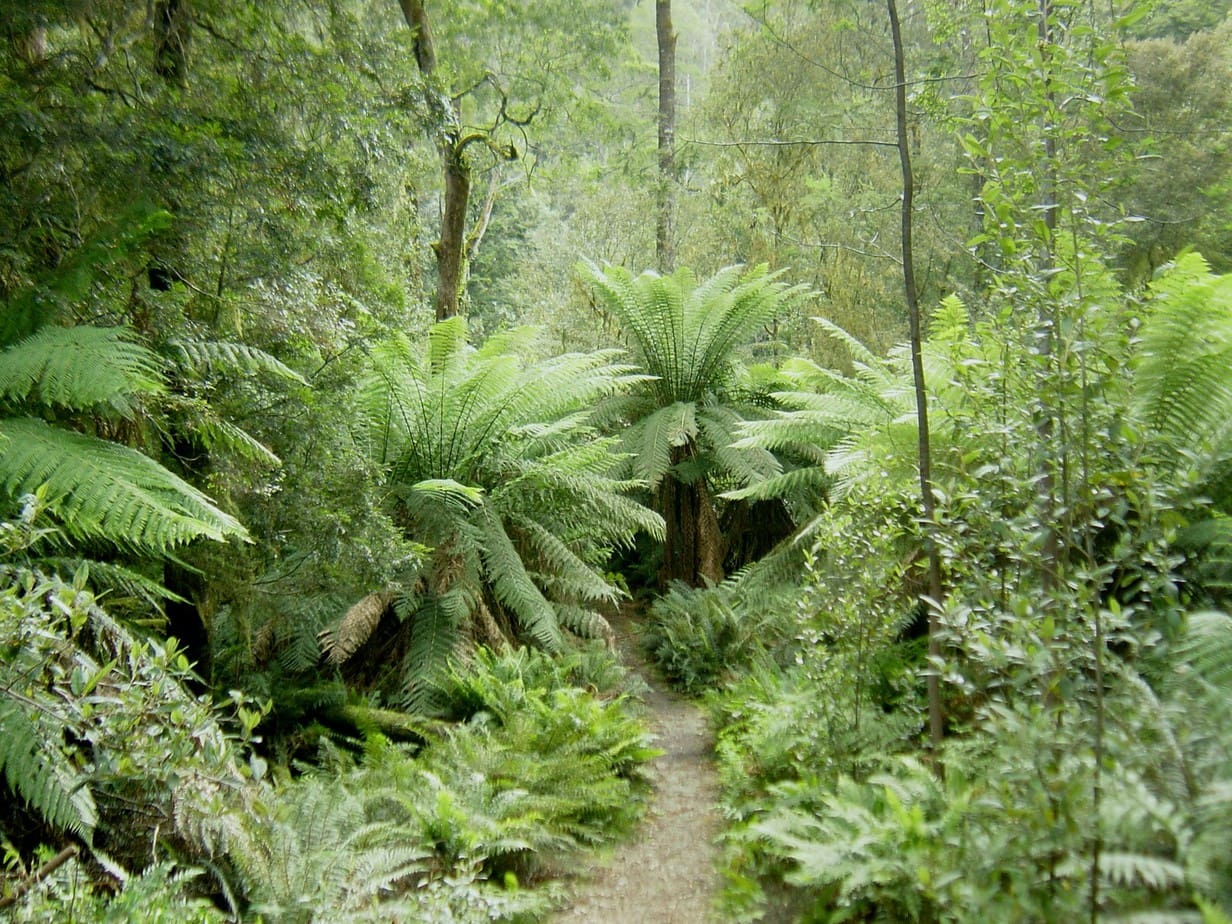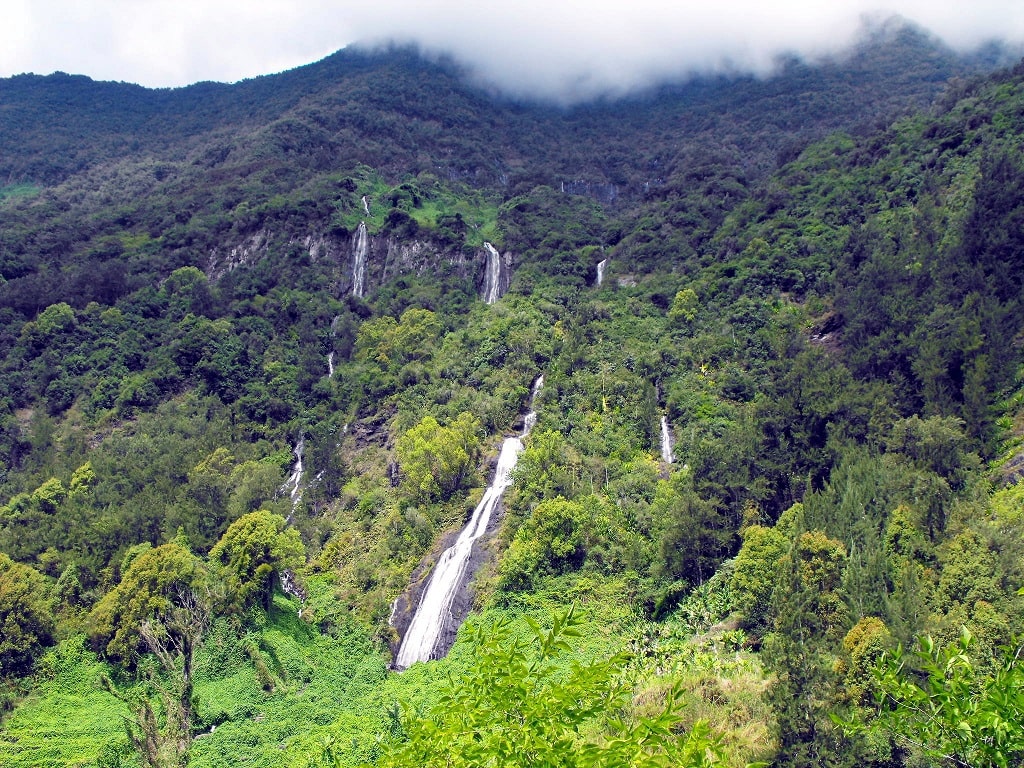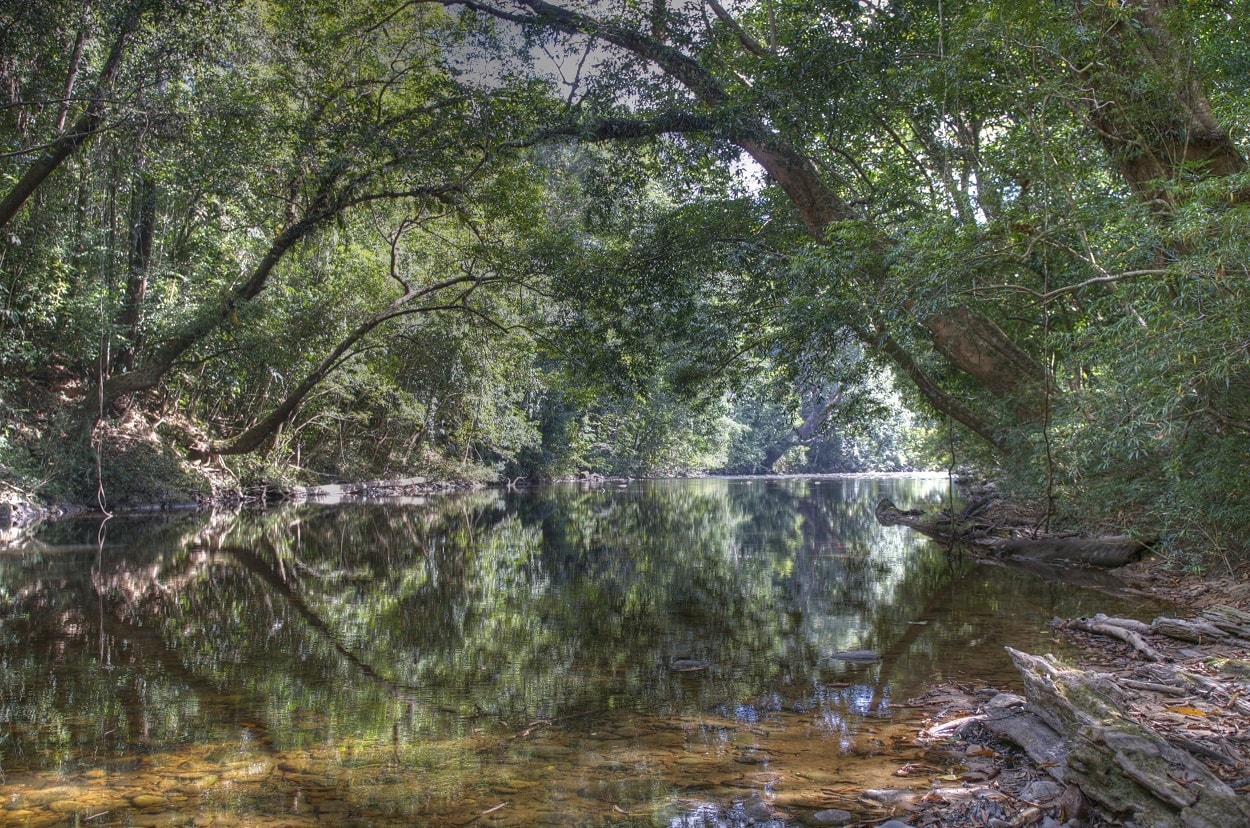Rainforests are some of the most beautiful natural places in the world and home to thousands of unique species of plants and animals. While rainforests are very important to the global ecosystem, they are unfortunately, some of the most endangered places in the world. The world’s rainforests are shrinking because of human activities such as logging, commercial development, and the over-collection of plants for medicine. All of the rainforests on this list are thousands, even millions of years old, and all of them are endangered. Hopefully, by spreading more awareness about these ancient rainforests, they can can still be saved.
10. Valdivian Temperate Rainforest
Age: Unknown for sure – at least 3,000 years
Location: Chile and parts of Argentina
Type: Temperate
Area: 95,800 sq mi (248,100 km²)

The Valdivian Temperate Rainforest is primarily located in Chile, but extends into Argentina. The forest covers a narrow strip of land between the western slope of the Andes and the Pacific Ocean. The Valdivian is home to unusually high diversity of plant families such as a bamboos, ferns, evergreen angiosperm trees, and some conifers. Since the Valvidian Rainforest is separated from the other forests in the region, there is a large number of endemic species (species only found in this area).
In addition to the unique plants, there are also several rare animals in the Valvidian Rainforest, including the monito del monte, an arboreal marsupial; the southern pudú the world’s smallest deer; and the kodkod, South America’s smallest cat.
Did You Know?
Many of the plants families found in the Valdivian Temperate Rainforest are also found in the temperate rainforests of Australia, Tasmania, and New Zealand.
9. Tarkine Rainforest
Age: Unknown for sure – at least 3,000 years
Location: North west Tasmania, Australia
Type: Temperate
Area: 695 sq mi (1,800 km²)

The Tarkine Rainforest largest area of Gondwanan cool-temperate rainforest in Australia. The Gondwanan rainforests were named after the ancient supercontinent of Gondwana – which existed between 500 – 180 million years ago – because the fossil shows that the present-day rainforests contain many of the same species as the rainforests covering Gondwana.
The Tarkine Rainforest’s exact age is unknown, but it is believed to be quite ole and is at least 3,000 years old like the forest’s oldest trees. Like all of the rainforests on this list, the Tarkine Rainforest has been critically threatened by logging and other human activities. Fortunately, there is a strong conservation effort to save the remaining Tarkine Forest and in 2005, the Tasmanian and Australian governments agreed to protect an additional 70,000 hectares of rainforest in the Tarkine from logging.
Did You Know?
The Tarkine Rainforest is home to the world’s largest freshwater crayfish, Astacopsis gouldi, also known as the Giant Freshwater Lobster.
8. Yakushima Forest
Age: over 7,000 years
Location: Yakushima, Japan
Type: Temperate
Area: 73.2 sq mi (189.6 km²)

Yakushima Island was designated a UNESCO World Heritage Site in 1993 and contains the remnants of a warm-temperate ancient rainforest that is unique to this part of the world. While no one knows for sure how old Yakushima Forest is, one of its oldest trees, the Jōmon Sugi (yakusugi (Japanese cedar)), is believed to be over 7,000 years old!
In addition to being an ancient forest, Yakushima Forest is one of the world’s most beautiful forest, with many visitors noting that it looks like the scene of a fairy tale. Red-bottomed macaques (Yakushima macaque) and a variety of sika deer (yakushika) are native to Yakushima Island and forest. According to some visitors, the macaques and deer have a symbiotic relationship and the monkeys sometimes ride on the backs of the deer.
Did You Know?
Yakushima Forest served as the inspiration for the landscape of the popular animated film, Princess Mononoke.
7. Congo Basin Rainforests
Age: over 10,000 years
Location: parts of Cameroon, Gabon, the Republic of the Congo, Equatorial Guinea, Democratic Republic of the Congo, and the Central African Republic
Type: Tropical
Area: total basin covers 1.3 million sq mi (3.7 million km²)

The rainforests of the Congo Basin are the second largest rainforests in the world, just after the Amazon. The Congo Basin covers an area of over 1.3 million square miles (3.7 million square kilometers). While there is strong evidence that there were forests all over the area as far back as 1.6 million years ago, the current tropical forests emerged about 10,000 years ago, following the last Ice Age.
There are approximately 10, 000 species of tropical plants in the Congo Basin and 30 percent are unique to the region. Unfortunately, several animal species native to the Congo rainforests are endangered, including forest elephants, chimpanzees, bonobos, and lowland and mountain gorillas.
Did You Know?
The Congo Basin is the only place to shelter all three subspecies of gorilla: the lowland gorilla, the endemic eastern lowland gorilla, and the endangered mountain gorilla.
6. Kakamega Forest
Age: 2+ million years
Location: Kakamega and Kisumu Counties, Kenya
Type: Tropical
Area: 91.89 sq mi (238 km²)

Kakamega Forest is a few million years old and is the only rainforest in Kenya. It is believed that Kakamega Forest is all that remains of a tropical rainforest that spanned from coast to coast of the Africa across the continent’s the equatorial line. As a tropical rainforest, Kakamenga Forest looks more like the rainforests of Central and West Africa than the other forests in East Africa.
In Kakamega Forest, there are over 60 species of ferns, 150 species of trees and shrubs, and 170 species of flowering plants, including 60 species of orchids with nine species endemic to this forest.
Did You Know?
Unlike some of the better known forests on this list, Kakamega Forest is a hidden gem and not typically a tourist hotspot. However, Kakamega Forest welcomes visitors and there are a number of guided tours and clearly marked walking trails.
5. Réunion National Park
Age: 2 – 2.5 million years
Location: island of Réunion (near Madagascar; governed by France)
Type: Tropical
Area: 406.89 sq mi (1,053.84 km²)

Réunion National Park only became an officially protected site on the island of Réunion in 2007. However, the forested lands protected by Réunion National Park are nearly as old as the island, which emerged over 3 million years ago. Réunion island sits atop a volcanic hotspot and there are two volcanoes on the island, one active and the other dormant. Both slopes of the two volcanoes are heavily forested.
Réunion National Park contains 43 of the 2,000 vertebrae species on the island and most of the 1,600 recorded native plant species. While most of Réunion National Park is untamed nature, there is a small cultivated interior where farming livestock and crops.
Did You Know?
Réunion National Park covers about 42% of the entire island.
4. Amazon Rainforest
Age: over 55 million years
Location: Brazil (60%), Peru (13%), and Colombia (10%); minor amounts in Venezuela, Ecuador, Bolivia, Guyana, Suriname, and French Guiana
Type: Tropical
Area: 2.1 million sq mi (5.5 million km²)

The Amazon Rainforest may not be the oldest forest in the world, but it is the largest and most biodiverse tropical rainforest in the world. In fact, the Amazon Rainforest is so big that it represents over half of the Earth’s remaining rainforests. About 10% of the world’s world’s known biodiversity, including endemic and endangered flora and fauna reside within the Amazon Rainforest.
In addition to a number of native plants and animals, a large number of indigenous people still live in the Amazon Rainforest. About 9% (2.7 million) of the Amazon’s population is still made up of indigenous people – 350 different ethnic groups, more than 60 of which still remain largely isolated. Although the Amazon Rainforest is important to the world’s climate function, over the last few decades many sections of the Amazon Rainforest have been destroyed because of deforestation.
Did You Know?
The Amazon Rainforest contains about 90-140 billion metric tons of carbon, which makes its destruction even more dangerous. If all of this carbon were released, it would significantly increase global warming.
3. Taman Negara
Age: over 130 million years
Location: Pahang, Terengganu and Kelantan, Malaysia
Type: Tropical
Area: 1,677 sq mi (4,343 km²)

Although the Daintree Rainforest is much older, Taman Negara is often billed as the “world’s oldest rainforest.” While it might not actually be the oldest, Taman Negara is extremely old with an estimated age of over 130 million years.
Taman Negara was the first officially protected area in Malaysia and was established in 1938. The Sultans of Kelantan, Pahang, and Terengganu (during King George’s Silver Jubilee), each set aside a piece of their lands to form Taman Negara. Like many of the old forests on this list, Taman Negara is a popular tourist destination and one of its most famous attractions is the Taman Negara Canopy Walk – a 510 meter (1,673 feet) long suspension bridge spanning across the forest’s high treetops.
Did You Know?
Taman Negara was originally named King George V National Park, but was renamed after Malaysia gained its independence in 1957.
2. Borneo Lowland Rainforest
Age: about 140 million years
Location: Borneo (shared by Malaysia, Brunei, and Indonesia)
Type: Tropical
Area: 165,100 sq mi (427,500 km²)

The Borneo Lowland Rainforest is about 140 million years old and covers much of the island of Borneo. In the past, the rainforest completely covered the island. Borneo is home to over 15,000 species of flowering plants, 3,000 species of trees, 221 species of terrestrial animals, and 420 species of birds that live on the island full time.
Despite being one of the world’s oldest and largest forests in the world, much of the Borneo Lowland Rainforest is being wiped out due to intense deforestation. It is estimated that Borneo has lost about 30% of its forest over the past 40 years.
Did You Know?
The Borneo Lowland Rainforest is the only place where the Bornean Orangutan, which is only one of two remaining species of Orangutan in the world, can be found in the wild.
1. Daintree Rainforest
Age: 180 million years
Location: North east coast of Queensland, Australia
Type: Tropical
Area: ~460 sq mi (1,200 km²)

The Daintree Rainforest is estimated to be about 180 million years old making it the oldest rainforest in the world. In addition to being the oldest, the Daintree is also one of the largest continuous areas of rainforest in Australia – the Daintree Rainforest covers about 460 square miles (1,200 square kilometers).
With such a long and rich history, the Daintree Rainforest is home to about 30% of Australia’s frog, reptile and marsupial species in Australia, 65% of the country’s bat and butterfly species as well as 18% of all bird species. There are also over 1,200 species of insects living in Daintree Rainforest. Additionally, the Daintree Rainforest is a popular tourist attraction and receives about 400,000 visitors every year.
Did You Know?
The Daintree Rainforest is so old that it is home to 12 out of the 19 total primitive flowering plant families found on Earth.











